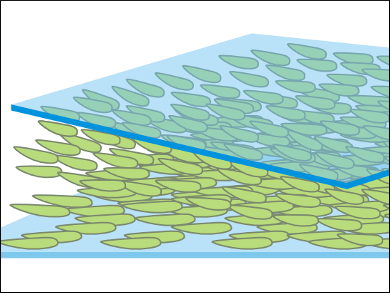Daniel Vorländer was born in Eupen (near Aachen), Germany, on June 11, 1867. He studied chemistry at the Universities of Kiel, Munich, and Berlin, all Germany. He received his Ph.D. from the University of Halle, Germany, for work on the amidines of oxalic acid under the supervision of Jacob Volhard in 1890.
In 1896, he completed his habilitation with work on resorcin derivatives and started to teach organic chemistry at the University of Halle. Vorländer was made Full Professor and Director of the Chemical Institute there in 1908. During World War I, he served in the military and returned to his post in Halle in 1917. He remained at the university until his retirement in 1935. Among his doctoral students was Hermann Staudinger, the “father of polymer chemistry”. Daniel Vorländer died on June 8, 1941, in Halle.
Vorländer is best known for his work on liquid crystals, materials whose properties lie between those of solids and those of liquids. The molecules in a liquid crystal are ordered to a greater or lesser extent (example pictured above) and can form several different types of phases. Today, these materials are of great importance in display technology. However, in Vorländer’s time, they were considered merely a curiosity and did not catch the attention of many researchers.
Vorländer was not deterred by this lack of interest. He worked on the topic for 30 years, and by the time he retired, he had synthesized most of the liquid crystals known at the time. He hypothesized that a linear shape of molecules causes a liquid crystal structure, and discovered that mixtures of compounds can have a liquid crystal character that is missing from the separate components.
Daniel Vorländer is the answer to Guess the Chemist (66).
Sources
- Daniel Vorländer. 11. 6. 1867–8. 6. 1941,
C. Weygand,
Ber. Dtsch. Chem. Ges. A 1943, 76, 41–61.
DOI: 10.1002/cber.19430760618 - Daniel Vorländer,
H. Eberle,
Catalogus Professorum Halensis 2017.
Selected Publications by Daniel Vorländer
- Über die einachsige Aufrichtung der krystallinen Flüssigkeiten (in German),
D. Vorländer, J. Fischer,
Ber. Dtsch. Chem. Ges. 1930, 63, 2506–2510.
DOI: 10.1002/cber.19300630926 - Die Lehre von den innermolekularen Gegensätzen und die Theorie des Benzols (in German),
D. Vorländer,
Ber. Dtsch. Chem. Ges. 1919, 52, 263–283.
DOI: 10.1002/cber.19190520216 - Einfluß der molekularen Gestalt auf den krystallinisch-flüssigen Zustand (in German),
D. Vorländer,
Ber. Dtsch. Chem. Ges. 1907, 40, 1970–1972.
DOI: 10.1002/cber.190704002101 - Substanzen mit mehreren festen und mehreren flüssigen Phasen (in German),
D. Vorländer,
Ber. Dtsch. Chem. Ges. 1907, 40, 1415–1432.
DOI: 10.1002/cber.19070400225 - Entstehung krystallinischer Flüssigkeiten durch Mischung von Substanzen (in German),
D. Vorländer, A. Gahren,
Ber. Dtsch. Chem. Ges. 1907, 40, 1966–1969.
DOI: 10.1002/cber.190704002100 - Ueber krystallinisch-flüssige Substanzen (in German),
D. Vorländer,
Ber. Dtsch. Chem. Ges. 1906, 39, 803–810.
DOI: 10.1002/cber.190603901126 - Ueber die Addition von Säuren an α, β-ungesättigte Ketone (in German),
D. Vorländer, M. Hayakawa,
Ber. Dtsch. Chem. Ges. 1903, 36, 3528–3546.
DOI: 10.1002/cber.190303603144 - Zur Constitution der disubstituirten Oxalendiamidine (in German),
D. Vorländer,
Ber. Dtsch. Chem. Ges. 1891, 24, 803–825.
DOI: 10.1002/cber.189102401156
Also of Interest
- 50th Anniversary: Hermann Staudinger’s Death,
ChemViews Mag. 2015.
Nobel Laureate Staudinger was the father of polymer chemistry and discovered the ketenes - 125 Years of Liquid Crystals,
ChemViews Mag. 2013
Since the discovery of liquid crystals in 1888, the Nobel Prize in Physics in 1991 was awarded for research into liquid crystals and they have become …




